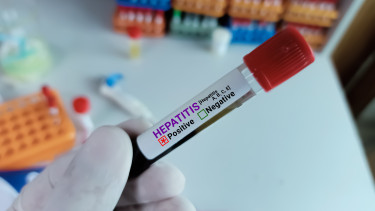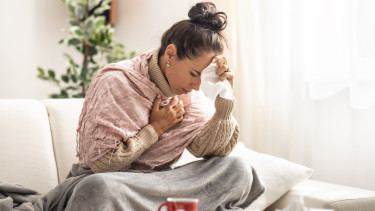Hungary's promising COVID-19 numbers vs. hospital statistics

You can scroll down to take a look at the first chart, but please be back. Note that these are weekly averages!
Alright, welcome back.
Now, the data on which the chart is based show 7-day averages.
Here are the main findings:
1) When a pandemic ‘wave’ kicks in there are a lot of vacant hospital beds and the share of active COVID-19 cases needing hospital care (green line) can run as high as 7% or over.
This means that 7% of people that are officially diagnosed with SARS-CoV-2 are in such a bad condition they have to be hospitalised.
However, given the major underdetection of cases in Hungary, the actual ratio is more likely around 2 to 3% if we take into consideration those that have the infection but are asymptomatic or have mild symptoms. Our starting point, however, is official government reports, hence the peaks around 7%.
2) On the chart, you find these peaks in late October 2020 and mid-March 2021. Put simply, that was the end of health care capacities when everyone that needed hospitalisation was admitted in one of the institutions.
3) The more active cases there are, the more drastically this ratio drops (green line). In this case, hospitals can admit only patients with more severe symptoms, while an increasing number of people infected with coronavirus are trying to make it at home. Look for December 2020 and end-March 2021 (still ongoing) on the chart for examples. (In case you wonder if you’re better off in a hospital or at home, here's an advice: If your symptoms are mild, stay at home so you can avoid some other nasty infection. If your health deteriorates swiftly or your symptoms are serious, seek help in a hospital.)
4) What’s the orange line? It shows that 6 to 8% of COVID-19 patients in hospitals required mechanical ventilation. That was the case until the end of last year. In the ‘third wave’, this ratio rose to over 12% and stayed there.
5) What does this mean? It means that while the number of COVID-19 patients in hospital as a percentage of active cases decreases dramatically (again, the green line, it’s down at 2.4% currently), still 12% of coronavirus patients in hospitals are on ventilators. According to the official report on Friday morning, 5,937 COVID-19 patients are in hospital, with 677 of them on ventilators.
Conclusions:
- Every hospital in Hungary has been operating as COVID-19 centres for a while. But now, as the health care system is trying to get back to ‘business as usual’ and run its ‘old’ and crucially important departments, hospitals are trying to discharge every coronavirus patient whose lives are not at risk.
- The orange and green lines run roughly parallel with each other as long as the health care system can cope. When the orange diverges from the green line it indicates that ventilation capacities reached their maximum at that point.
This peak was at 600 ventilators last autumn, but a lot of quasi ICUs with lots of ventilators (but not enough staff) were set up by the spring therefore the two lines were roughly parallel with each other for a while in the first quarter.
The sharp divergence came about as the ICUs and quasi ICUs are still up and running but they keep sending home those that are not in a life-threatening condition, in order to make room for ‘regular’ patients, as we mentioned above.
How it is possible that the green line keeps dropping so sharply?
The answer is that it will keep falling until another ‘wave’ hits.
(Balázs Pártos, co-author of this analysis says there are no waves, rather than a single wave. Describing the situation he used the metaphor of a box, with a ball in it. The ball bounces depending on how we position the box and how hard we shake it. The movement of the ball is what we perceive as waves and human behaviour is the shaking.)
There’s a chance that the green will go even lower in the next two to three weeks. The number of people in hospitals with COVID-19 could halve but the green line will not because the number of recovered people will also rise. It could, however, drop to under 2.0% or even to 1.5%. (An example: 2,800 people in hospitals two weeks from now (vs. 5,500 currently) with 180,000 active cases (vs. 245,000 currently).)

The impacts of re-opening
The problem is that the government most likely started to re-open the economy too soon. The easing of the curbs included the re-opening of stores, the extension of their opening hours, the shortening of the curfew, the opening of primary schools (1st-4th grades) and nurseries, the opening of restaurant terraces. And that’s not the end of it. It’s only a matter of days before cinemas, theatres, sport events, the inner rooms of restaurants, hotels will also be re-opened and those allowed to use these services (i.e. those with immunity certificates) will not even have to wear masks.
The impact of the re-opening stages is likely to be reflected in COVID-19 stats by the third week of May. The tag ‘fourth wave’ will be pinned on the phase when this descending stops and switches back to growth again. In about three weeks, but for a week it will look like stagnation as the rise will ‘sit on’ a declining trend.
How come the orange line would not drop?
Well, the absolute number of COVID-19 patients on ventilators has also been dropping. A bit more than two weeks ago nearly 1,350 people required mechanical ventilation, now ‘only’ 662 of them. Their number relative to the number of coronavirus patients in hospitals does not decline because many patients who are not in a life-threatening situation get discharged while those that stay are the severe cases and more and more of them are then hooked up to ventilators. The more serious cases are in hospitals, the higher the orange line will rise. The extreme case is 100% when every COVID-19 patient in hospital requires artificial ventilation.
Cover photo: Getty Images









